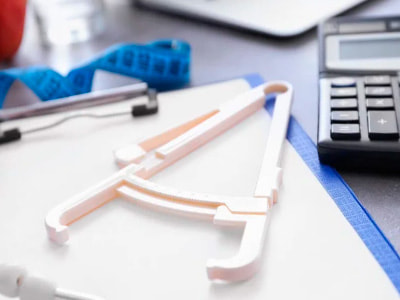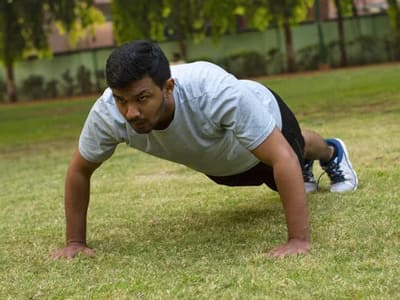Weight loss tools
Body Fat calculator India

Are you aware that understanding your body fat percentage is crucial for assessing and enhancing your health and physical condition? In this article, we’ll delve into the measurement of body fat using the skin-fold technique, a method widely employed by health professionals and nutritionists.
Moreover, we’ll provide you with a calculator and guide you step-by-step to perform the measurements using a caliper, enabling you to obtain accurate results by yourself. Gear up to become proficient in the subject!
Body Fat Percentage Measurement: Methods and Tools
Several methods exist for calculating body fat percentage, each with its own advantages and drawbacks. Here’s a summary of some of the most popular ones:
- Bioimpedance scales: These devices estimate body fat by sending a low-intensity electrical current through the body and measuring the resistance encountered. Although they are convenient and easy to use, their accuracy can be affected by factors such as hydration levels and prior physical activity.
- Skin-fold calipers: This tool measures the thickness of skin folds at various areas of the body. By adding up the values obtained and applying a specific formula, the body fat percentage is estimated. When done correctly, this method offers substantial precision and is more economical than others.
- Weight and circumference measurements: This involves measuring the weight and the circumferences of different parts of the body (waist, hip, arm, etc.) and employing specific formulas to determine the body fat percentage. Although it’s a straightforward procedure and doesn’t require specialized equipment, its accuracy is lower compared to other techniques.
There are also more advanced and accurate methods, such as dual-energy x-ray absorptiometry (DEXA) and magnetic resonance imaging (MRI), but these tend to be costly and less accessible to the general public.
Body Fat Calculator
Formula to calculate body fat percentage with skin folds
The Jackson-Pollock formula is one of the most commonly used methods to estimate body fat percentage from skin fold measurements and is the one we have used for our calculator. There are two versions of this formula, one for men and another for women. Let’s take a closer look:
Jackson-Pollock Formula for Men:
- We add up the values of the triceps, chest, and subscapular skin folds.
- We convert the sum into its base 10 logarithm (log10).
- We apply the following formula: % fat = (1.10938 x log10) – 0.0008267 x (sum of skin folds) + 0.2.
Jackson-Pollock Formula for Women:
- We add up the values of the triceps, suprailiac, and thigh skin folds.
- We apply the following formula: % fat = (0.546 x sum of the three skin folds) + (0.159 x age) – 20.402
Alternative methods to calculate body fat
Durnin and Womersley formula: This differs from the Jackson-Pollock formula in that it measures 4 skin folds (bicep, tricep, subscapular, and suprailiac) and is suitable for a wide variety of ages and populations.
Sloan Method: This method uses two skin fold measurements, one for men and another for women. For men, the abdomen fold is measured; for women, the tricep fold is measured. Although this method is simpler, it may be less accurate than those that use more skin fold measurements.
Parillo Method: This method uses 9 skin fold measurements, making it one of the most comprehensive and detailed methods for calculating body fat percentage. However, it is also more complex and may require more time to perform the measurements and apply the formula.
In my view, each method and formula has its own advantages and limitations. Some may be more suitable for certain age groups or levels of physical activity.
Why is knowing your body fat percentage important?
It is a more informative measure than body weight or body mass index (BMI) when it comes to evaluating health and body composition. An optimal body fat percentage is associated with a lower risk of cardiovascular disease, type 2 diabetes, hypertension, and other health problems.
Furthermore, knowing it allows you to set realistic goals for fat loss and muscle gain, helping you design a suitable exercise and nutrition plan to achieve those goals.
Some tips to improve your body composition:

- Set realistic goals: Ensure your fat loss and muscle gain goals are achievable and in line with your individual characteristics and physical activity levels.
- Maintain a balanced diet: Consume a variety of nutrient-dense foods, including lean proteins, complex carbohydrates, and healthy fats, and ensure you are getting enough vitamins and minerals.
- Exercise regularly: Incorporate both resistance training and cardiovascular exercise into your routine to improve body composition and maintain optimal health.
- Get sufficient rest: Recovery is crucial for progress in fat loss and muscle gain. Make sure to get enough sleep and schedule rest days in your workout routine.
- Monitor your progress: Perform skinfold measurements and review your body fat percentage periodically to evaluate your progress and adjust your exercise and nutrition plan as necessary.
- Seek support and guidance: If you have difficulties in reaching your goals or need more information on how to improve your body composition, consider seeking help from a health professional, personal trainer, or dietitian.
- Keep a food and exercise journal: Keeping a record of what you eat and your physical activities can help you identify areas for improvement and ensure you are meeting your nutrition and exercise goals.
- Stay properly hydrated: Drinking enough water is essential for overall health and can help control appetite and improve performance during exercise.
- Avoid chronic stress: Prolonged stress can have negative health effects and hinder progress in improving body composition. Look for ways to manage stress, such as meditation, yoga, or engaging in relaxing hobbies.
- Don’t skip meals: Skipping meals can lead to overeating later in the day and negatively impact your energy levels. Try to eat regular, balanced meals throughout the day.
- Consume fiber-rich foods: Fiber can help control appetite and improve digestion, which contributes to fat loss and improved body composition.
- Learn to listen to your body: Pay attention to hunger and satiety signals and avoid overeating or ignoring hunger.
- Don’t obsess over perfection: Improving body composition is a long-term process that requires patience and persistence. Don’t worry if you don’t see immediate results or if you experience setbacks. Focus on progress and continual improvement rather than trying to be perfect at all times.
Remember that the most important thing is to maintain a focus on health and overall well-being rather than simply trying to reach a specific number on the scale or an ideal body fat percentage. Skinfold measurement is a valuable tool, but it’s not the only indicator of health and success in your fitness and nutrition efforts.
